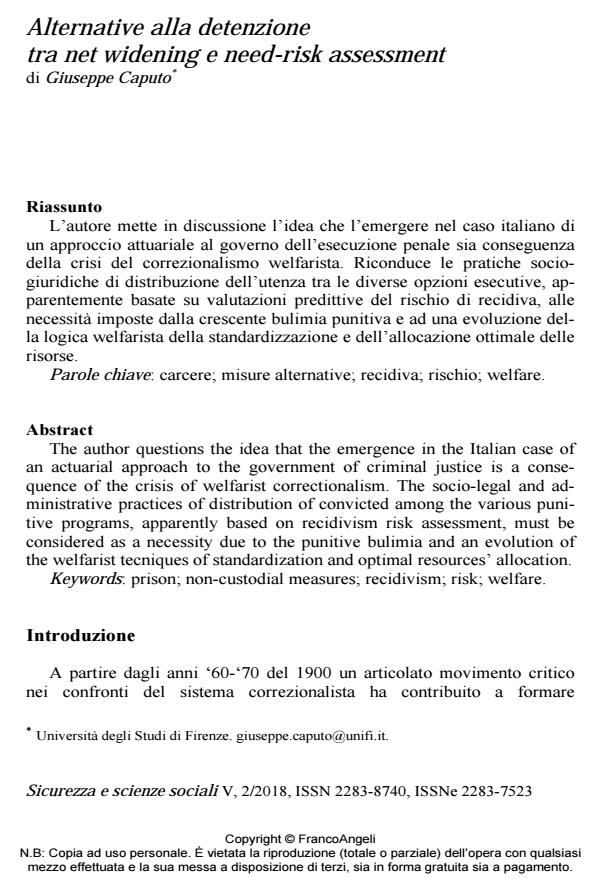Alternative alla detenzione tra net widening e need-risk assessment
Journal title SICUREZZA E SCIENZE SOCIALI
Author/s Giuseppe Caputo
Publishing Year 2019 Issue 2018/2
Language Italian Pages 15 P. 25-39 File size 168 KB
DOI 10.3280/SISS2018-002003
DOI is like a bar code for intellectual property: to have more infomation
click here
Below, you can see the article first page
If you want to buy this article in PDF format, you can do it, following the instructions to buy download credits

FrancoAngeli is member of Publishers International Linking Association, Inc (PILA), a not-for-profit association which run the CrossRef service enabling links to and from online scholarly content.
The author questions the idea that the emergence in the Italian case of an actuarial approach to the government of criminal justice is a consequence of the crisis of welfarist correctionalism. The socio-legal and administrative practices of distribution of convicted among the various punitive programs, apparently based on recidivism risk assessment, must be considered as a necessity due to the punitive bulimia and an evolution of the welfarist tecniques of standardization and optimal resources’ allocation.
Keywords: Prison; non-custodial measures; recidivism; risk; welfare
Giuseppe Caputo, Alternative alla detenzione tra net widening e need-risk assessment in "SICUREZZA E SCIENZE SOCIALI" 2/2018, pp 25-39, DOI: 10.3280/SISS2018-002003